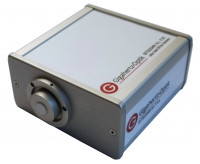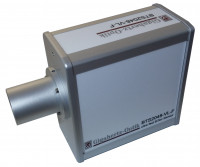This product is no longer manufactured. Remaining stock may still be available. Please refer to the alternatives listed below under "Similar products" or contact us directly.
Alternative Products for this discontinued product:
BTS2048-VL
Versatile superb Speed and high Quality LED Spectroradiometer
- Bi-Tec sensor*: Dual sensor for more accurate measurements
- Light meter for LED flash binning
- Very short measuring times (electronic shutter), high dynamic range (filter wheel)
- Trigger inputs and outputs, Ethernet and USB for fast data transmission
- Direct input optics with diffuser for illuminance and spectral irradiance. Expandable with integrating sphere for luminous flux and spectral irradiance.
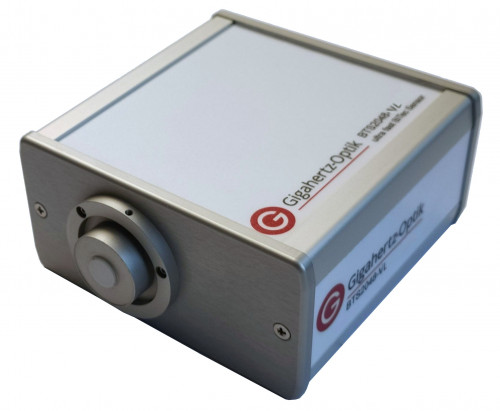
Requirements of a modern, versatile array spectroradiometer
There are many factors to be considered when assessing the suitability of array spectrometer systems for the absolute measurement of optical radiation parameters. For instance, the measurement of lamps that have different power ratings is only possible using array detectors that have a wide dynamic range. Precise, absolute measurements require the entire dynamic range of the spectroradiometer to be completely linearized and also require an accurate, traceable calibration. If the electronically controlled dynamic range (set by the integration time) is not sufficient, additional attenuating filters are needed. The filter selector must be mechanically robust to ensure long-term stability of the measurement system. For time-critical applications such as LED binning in pulsed mode, the electronically controlled dynamic range must be large enough to avoid the need for a time-consuming filter change during the measurement. For absolute measurements, an automated dark signal adjustment of the CCD is most beneficial. Spectroradiometers that are used for binning of front-end and back-end LEDs must accommodate precise synchronization of the measurement with the test LEDs operated in pulsed mode requiring suitable trigger interface and fast data readout. Flash measurements, i.e. measurements within a light pulse, require an electronic shutter for instantaneous (ns) zero setting of all pixels before a measurement is triggered. The measurement of the luminous flux, luminous intensity, and luminous intensity distribution requires additional accessory components e.g., integrating spheres, luminous intensity lenses, and goniometers. Reproducible interfacing to these entrance optic accessories is essential. Direct mounting of the spectroradiometer onto the accessory equipment helps avoid influences of flexible light guide connections. Among the requirements of color measurements are precise calculations in accordance with CIE 13.3, CIE 15, and TM-30-20 (in older versions TM-30-18 and TM-30-15), CIE224. For applications in the LED and semiconductor industries, the systems must also conform to the CIE S025 and LM-79-08 standards.
BTS2048-VL, diode array spectroradiometer with BiTec detector
The BTS2048-VL meets all the requirements of a high-end array spectroradiometer as well as being favourably priced despite its cutting-edge design.
*One of its unique features is the from Gigahertz-Optik developed innovative BiTec sensor that consists of a V(lambda) filtered Si photodiode and a spectroradiometer unit. This makes it extremely linear, stable, and fastand is therefore a guarantee for higher measurement accuracy which is not accompanied by any disadvantages. Both sensors can be used independently and the mutual correction of the sensors is advantageous for accuracy, speed and versatility (see article on BTS technology).
The fully linearized 2048 pixel CCD detector with an electronic shutter allows for integration times ranging between 2 µs and 4 s and offers an extremely broad dynamic range without the need for additional attenuating filters. This is three orders of magnitude more than the common millisecond integration times provided by lesser instruments. An even wider dynamic range is provided by the TEC-cooled spectroradiometer (BTS2048-VL-TEC).This variant has integration times ranging from 2 µs to 60 s. The 2 nm optical bandwidth ensures accurate spectral measurement values in the range between 280 nm and 1050 nm (0.4 nm/pixel).Mathematical bandwidth correction in accordance with CIE 214 has also been implemented for auto- correction of the measurement values. Si photodiodes exhibit exceptionally high linearity across their dynamic range. This makes them ideal for linearization of the CCD within the BiTec detector (see article on BTS technology). The constantly measuring diode can also be used to synchronize the measurement of PWM signals. This enables automatic recording of absolute spectral data using the BTS2048-VL, which is very difficult for conventional spectroradiometers without a BiTec sensor due to the integration time. In addition, the Si photodiode, which is fitted with a photometric filter (CIE V-lambda), can be used independent of the CCD. The device can therefore be used to perform fast measurements on very weak signals, something that makes the BTS2048-VL ideal for integration in goniometers and other systems. Another advantage of the BiTec technology in this context is the ability to integrate online correction of the spectral mismatch (f1’) of the diode using spectral data. Despite its compact dimensions of 103 mm x 107 mm x 52 mm (l x w x h), the BTS2048-VL spectroradiometer has a remote-controlled filter wheel with an OD1 and OD2 attenuation filter as well as a shutter for dark measurement.
Applications in front-end and back-end LED binning
The BTS2048-VL is perfectly suited for industrial front-end and back-end LED binning applications. Its back-thinned CCD based spectrometer, incorporates an electronic zero setting feature of all pixels before a measurement is triggered. The electronic shutter and triggering of the measurement can be synchronized with the power supply via a trigger port when the test LED is operated in pulsed current mode. The powerful microprocessor only requires 7 ms to transfer a complete dataset to the system computer via the fast LAN interface.
Direct mounting instead of using a light guide
The BTS2048-VL spectroradiometer has a diffusor window and can therefore be used to measure the irradiance/illuminance, incl. spectrum, color, and color rendering index, without any accessory equipment. With the diffusor window, the BTS2048-VL can also be mounted directly onto accessories such as integrating spheres, luminance lenses (according to CIE 127), and goniometers in order to measure the luminous flux, luminous intensity, and luminous intensity distribution. Gigahertz-Optik also offers the BTS2048-VL-F for applications with light guides.
User software and developer software
The standard S-BTS2048 user software has a customizable user interface and is extremely easy to use. It has a large number of display and function modules which can be activated when configuring the BTS2048-VL with the respective accessories from Gigahertz-Optik GmbH.
The S-SDK-BTS2048 developer software is recommended for integration of the BTS2048-VL in the customer’s own software.
Calibration
One essential quality feature of photometric devices is their precise and traceable calibration. The BTS2048-VL is calibrated by Gigahertz-Optik’s calibration laboratory that was accredited by DAkkS (D-K-15047-01-00) for the spectral responsivity and spectral irradiance according to ISO/IEC 17025. The calibration also included the corresponding accessory components. Every device is delivered with its respective calibration certificate.
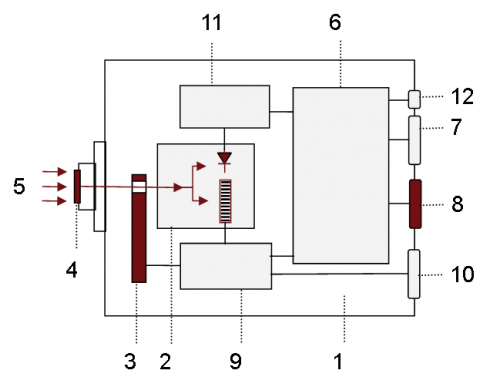
1) BTS2048-VL 2) BiTec sensor with Si photodiode, CCD array spectrometer 3) Filter wheel with OD1, OD2 and shutter 4) Precise cosine diffuser 5) Light incident 6) Microprocessor for data procesing and communication 7) USB 2.0 Interface 8) High Speed ethernet Interface 9) Microprocessor CCD sensor control 10) Trigger In/Out 11) Microprocessor photodiode 12) DC voltage supply
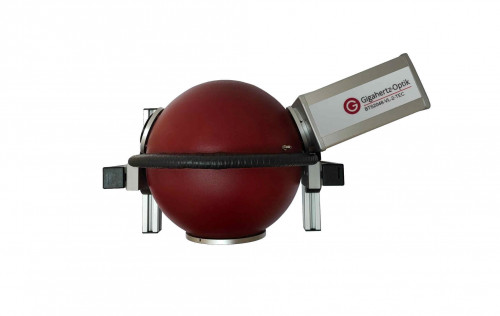
Direct mounting of the measurement device and accessory components
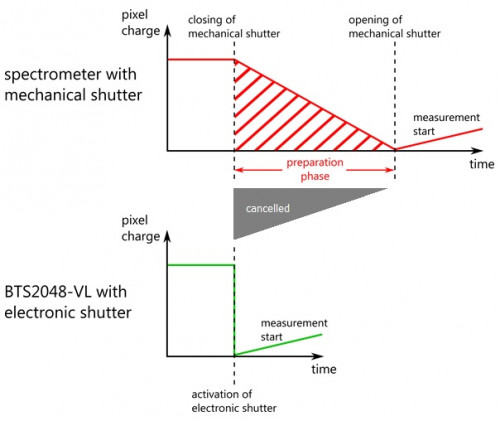
Electronic Shutter reduces the measurement time
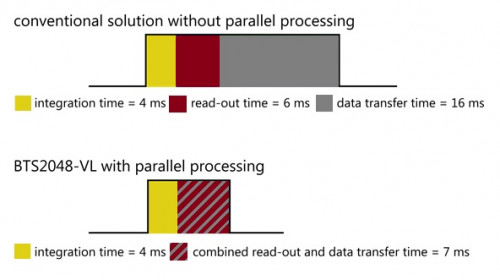
Ethernet interface reduces the datatransfer time
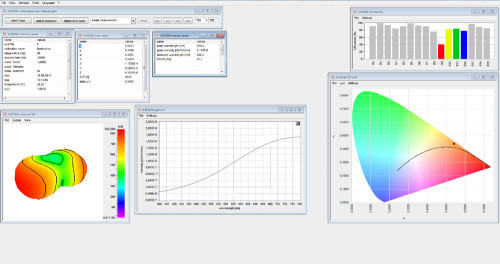
S-BTS2048 User software interface
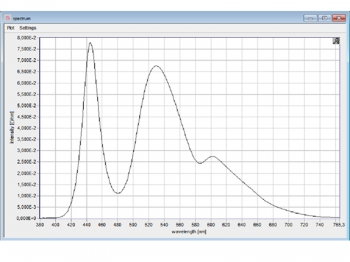
Graphical view of the spectrum
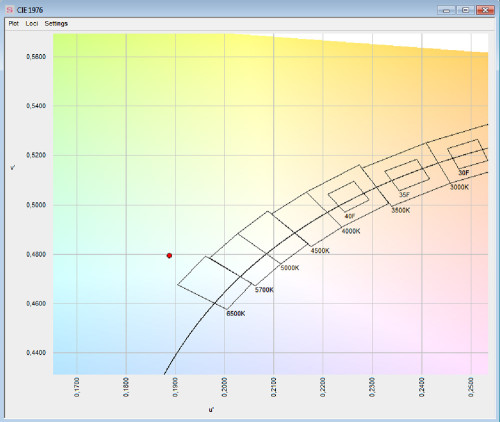
CIE 1976 Chromaticity diagram
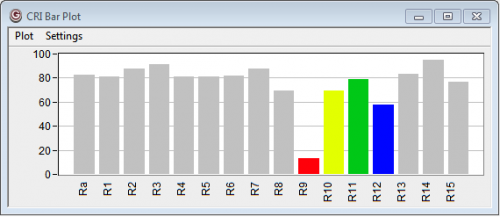
CRI Bar Plot
Similar Products
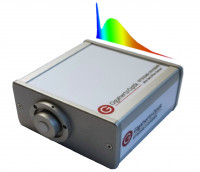
Product Categories
